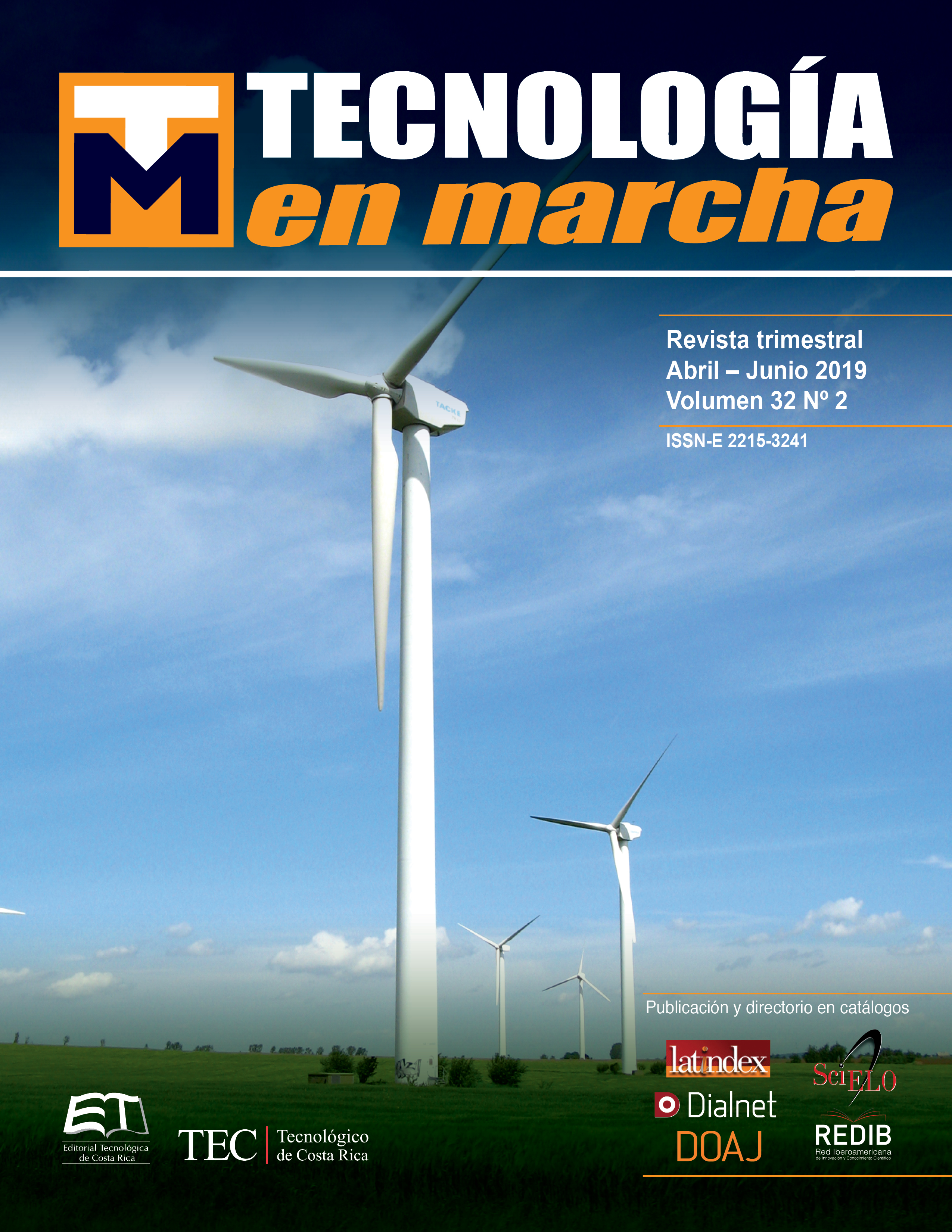Adjusted models for individual culm biomass of guadua bamboo (Guadua angustifolia Kunth) in managed stands in Southern Costa Rica
Main Article Content
Abstract
This study aims to adjust field data to non-lineal models in order to predict growth and estimate biomass accumulation according to allometric data of managed bamboo plantations from productive sites. The plantation is located near the community of Rio Claro in the district of Guaycará, Canton of Golfito, Province of Puntarenas, Costa Rica. Five stands were identified for the study, with three of them used for calibration and two for model validation. A classification by height cohort was needed in order to organize the database for better model adjustment; namely H1:0 to 4m., H2: 4.01 to 7m., H3: 7.01 to 10 m., H4: higher than 10.01 m. The inventory data was fit through non-lineal regression to three selected biomass models used in previous bamboo biomass studies. The predicting variables used were diameter, height and basal area.
The quality of model prediction was tested sing a Wilcoxon test for paired samples; the empirical biomass from the validation data set was paired to model predictions from the three models. Predictions from model Bm1, Bm2 and Bm3 are not significantly different from empirical data (p= 0.7064, 0.7735 0.8822 respectively). Only Bm1 tends to overestimate but the range is acceptable for the prediction. The average results here obtained 12.49, 12.82 and 12.9 Mg ha-1 of biomass for Bm1, Bm2 and Bm3 respectively, are a lower to those found by other authors in Moso bamboo forest of southern China where they found 8.13±2.15 Mg ha-1 yr-1. Although the comparison is against another species and different maximum age of the plantation (5 years in Moso compared to 3 years) it can be suggested that, as in trees, a range of biomass according to age, management and dimensions is expected.
Article Details
Los autores conservan los derechos de autor y ceden a la revista el derecho de la primera publicación y pueda editarlo, reproducirlo, distribuirlo, exhibirlo y comunicarlo en el país y en el extranjero mediante medios impresos y electrónicos. Asimismo, asumen el compromiso sobre cualquier litigio o reclamación relacionada con derechos de propiedad intelectual, exonerando de responsabilidad a la Editorial Tecnológica de Costa Rica. Además, se establece que los autores pueden realizar otros acuerdos contractuales independientes y adicionales para la distribución no exclusiva de la versión del artículo publicado en esta revista (p. ej., incluirlo en un repositorio institucional o publicarlo en un libro) siempre que indiquen claramente que el trabajo se publicó por primera vez en esta revista.

